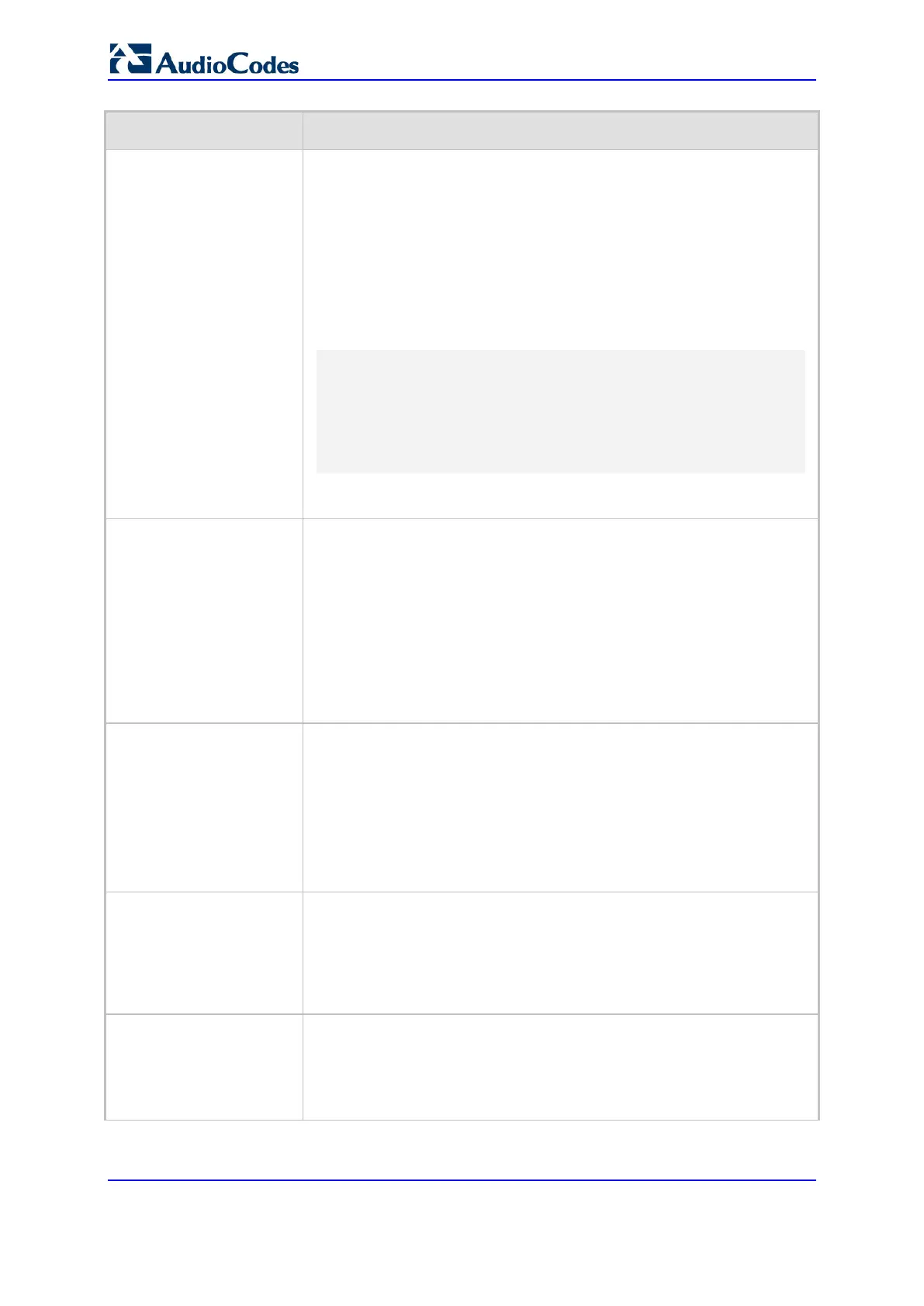User's Manual 1034 Document #: LTRT-89730
Mediant 3000
Parameter Description
[SBCEnforceMediaOrder] Enables the device to include all previously negotiated media lines within
the current session ('m=' line) in the SDP offer-answer exchange (RFC
3264).
[0] Disable (default)
[1] Enable
For example, assume a call (audio) has been established between two
endpoints and one endpoint wants to subsequently send an image in the
same call session. If the parameter is enabled, the endpoint includes the
previously negotiated media type (i.e., audio) with the new negotiated
media type (i.e., image) in its SDP offer:
v=0
o=bob 2890844730 2890844731 IN IP4 host.example.com
s=
c=IN IP4 host.example.com
t=0 0
m=audio 0 RTP/AVP 0
m=image 12345 udptl t38
If the parameter is disabled, the only ‘m=’ line included in the SDP is the
newly negotiated media (i.e., image).
SBC Diversion URI Type
[SBCDiversionUriType]
Defines the URI type to use in the SIP Diversion header of the outgoing
SIP message.
[0] Transparent = (Default) The device does not change the URI and
leaves it as is.
[1] Sip = The "sip" URI is used.
[2] Tel = The "tel" URI is used.
Note: The parameter is applicable only if the Diversion header is used.
The SBCDiversionMode and SBCHistoryInfoMode parameters in the IP
Profile table determine the call redirection (diversion) SIP header to use -
History-Info or Diversion.
SBC Server Auth Mode
[SBCServerAuthMode]
Defines whether authentication of the SIP client is done locally (by the
device) or by a RADIUS server.
[0] (default) = Authentication is done by the device (locally).
[1] = Authentication is done by the RFC 5090 compliant RADIUS
server
[2] = Authentication is done according to the Draft Sterman-aaa-sip-
01 method.
Note: Currently, option [1] is not supported.
Lifetime of the nonce in
seconds
[AuthNonceDuration]
Defines the lifetime (in seconds) that the current nonce is valid for
server-based authentication. The device challenges a message that
attempts to use a server nonce beyond this period. The parameter is
used to provide replay protection (i.e., ensures that old communication
streams are not used in replay attacks).
The valid value range is 30 to 600. The default is 300.
Authentication Challenge
Method
[AuthChallengeMethod]
Defines the type of server-based authentication challenge.
[0] 0 = (Default) Send SIP 401 "Unauthorized" with a WWW-
Authenticate header as the authentication challenge response.
[1] 1 = Send SIP 407 "Proxy Authentication Required" with a Proxy-
Authenticate header as the authentication challenge response.

